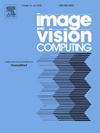Adversarially Enhanced Learning (AEL): Robust lightweight deep learning approach for radiology image classification against adversarial attacks
IF 4.2
3区 计算机科学
Q2 COMPUTER SCIENCE, ARTIFICIAL INTELLIGENCE
引用次数: 0
Abstract
Deep learning models perform well in medical image classification, particularly in radiology. However, their vulnerability to adversarial attacks raises concerns about robustness and reliability in clinical applications. To address these concerns, a novel approach for radiology image classification, referred to as Adversarially Enhanced Learning (AEL) has been proposed. This approach introduces a novel deep learning model ConvDepth-InceptNet designed to enhance the robustness and accuracy in radiology image classification through three key phases. In Phase 1, adversarial images are generated to deceive the classifier using the proposed model initially trained for classification. Phase 2 entails re-training the model with a mix of clean and adversarial images, improving its robustness by functioning as a discriminator for both types of images. Phase 3 refines adversarial images with Total Variation Minimization (TVM) denoising before classification by re-trained model. Pre-attack analysis with VGG16, ResNet-50, and XceptionNet achieved 98% accuracy with just 10,946 parameters. Post-attack analysis subjected to attacks such as Fast Gradient Sign Method, Basic Iterative Method, and Projected Gradient Descent, yields an average adversarial accuracy of 94.8%, with standard deviation of 1.6%, and an attack success rate of 3.3%. Comparative analysis with ResNet50, VGG16, and InceptionV3 indicates minimal performance drops. Furthermore, post-defense analysis shows that the adversarial images refined with TVM denoising are evaluated with re-trained model, achieving an outstanding ac- curacy of 98.83%. The combination of denoising techniques (Phase 3) and robust re-training (Phase 2) enhances robustness by providing a layered defense mechanism. The analysis validates the robustness of this approach.
求助全文
约1分钟内获得全文
求助全文
来源期刊

Image and Vision Computing
工程技术-工程:电子与电气
CiteScore
8.50
自引率
8.50%
发文量
143
审稿时长
7.8 months
期刊介绍:
Image and Vision Computing has as a primary aim the provision of an effective medium of interchange for the results of high quality theoretical and applied research fundamental to all aspects of image interpretation and computer vision. The journal publishes work that proposes new image interpretation and computer vision methodology or addresses the application of such methods to real world scenes. It seeks to strengthen a deeper understanding in the discipline by encouraging the quantitative comparison and performance evaluation of the proposed methodology. The coverage includes: image interpretation, scene modelling, object recognition and tracking, shape analysis, monitoring and surveillance, active vision and robotic systems, SLAM, biologically-inspired computer vision, motion analysis, stereo vision, document image understanding, character and handwritten text recognition, face and gesture recognition, biometrics, vision-based human-computer interaction, human activity and behavior understanding, data fusion from multiple sensor inputs, image databases.
 求助内容:
求助内容: 应助结果提醒方式:
应助结果提醒方式:


